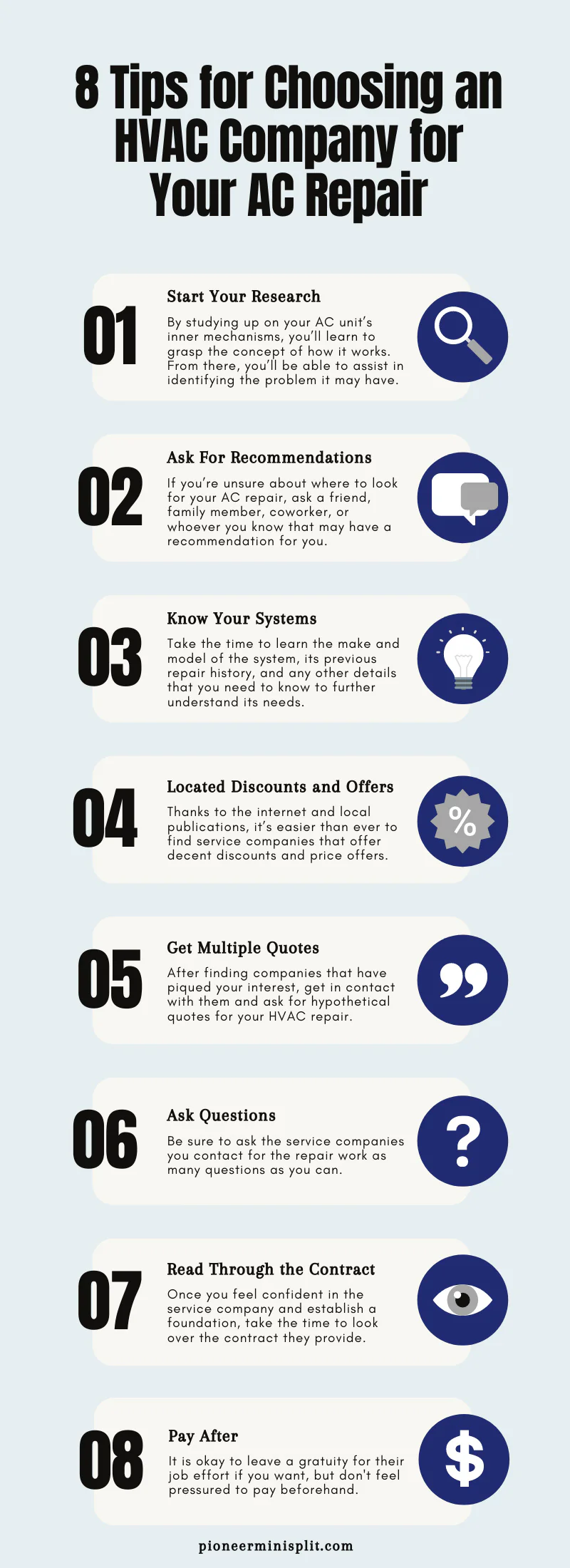1 Source Portable Air - The Facts
1 Source Portable Air - The Facts
Blog Article
Facts About 1 Source Portable Air Revealed
Table of ContentsIndicators on 1 Source Portable Air You Need To KnowOur 1 Source Portable Air Statements1 Source Portable Air Fundamentals Explained4 Easy Facts About 1 Source Portable Air Described
Although references may seem challenging to track, there are methods to identify them rapidly and effectively. On social media, many individuals give out referrals about a/c service technicians that are reliable and professional throughout an air conditioning installment, repair or upkeep task. Because various other users can make remarks, the process of identifying whether or not a firm is worth pursuing is never ever a trouble.

A service that has actually built a solid reputation normally has very experienced professionals who completely understand how to tackle a/c jobs that involve modern-day and classic tools. Experienced technicians should always be considered during sophisticated upkeep and repair jobs because the procedures that trained professionals carry out are economical. An additional advantage is that knowledgeable a/c firm service providers never ever make use of inappropriate replacement supplies in order to simplify repair work tasks.
Yeah, at NEXGEN Air, we're skilled A/c specialists, however we comprehend that not every person is. This is for true who have never had to deal with a Cooling and heating problem.
1 Source Portable Air for Dummies
A/c stands for heating, ventilation, and air conditioning. 9 basic components comprise a full central air and heat system. These elements are the furnace, the warmth exchanger, the evaporator coil, the condensing device, refrigerant tubes, the thermostat, the ductwork, the vents, and the heatpump. (Do not fret! We'll clarify these parts carefully better down the checklist.) The heating system is your home heating device.
There are benefits and drawbacks to both, but we'll cover that in one more section. You can find your heater hiding in your basement, garage, or energy closet. Your heating system's major feature is to warmth air and relocate right into your air ducts to warm your residence. (Enjoyable truth: Heating systems are commonly misinterpreted for central heating boilers, however they're different devices). Here's a fantastic example of a new Lennox furnace in an utility closet.

While the furnace presses hot air right into your air ducts, the heat exchanger is the one converting chilly air into hot air. An additional resident inside the heating system, the evaporator coil takes in any heat from air passing away over it to blow amazing air through your vents and into your home. Your condensing device offers a comparable function as your evaporator coil however you can find the condensing device outside, normally on the side of your residence.
Refrigerant tubes attach your evaporator coil to your condensing coil. Cooling agent tubes are generally made of steel and are created to hold refrigerant and to attach the indoor and exterior units. Your thermostat is that little tool placed on the wall surface somewhere inside your home that enables you to control your home's temperature level (don't ask us where to locate your thermostat, there's no regulation regarding where they're put - they can be anywhere!).
The Single Strategy To Use For 1 Source Portable Air
Your heating, air flow and a/c (HVAC) system is one of the most important systems in your house, running silently behind-the-scenes to handle interior temperature levels. Without cooling and heating, you would certainly be dealing with chilly temperature levels in the wintertime and unrestrainable heat in the summer. A/c systems also ventilate your home, maintaining the air quality healthy for your household to breathe.
(http://bizizze.com/directory/listingdisplay.aspx?lid=60937)

Maintain reading for more information regarding choosing the ideal cooling and heating system. There are many reliable and inexpensive options available for updating your HVAC. Selecting the best A/c system for your home depends on many individual elements and choices. A few points to think about consist of the type of system, power performance and your budget plan.
Replacing your system with a comparable setup is likely the most cost-effective option. Other considerations include the environment and climate where you live and what gas sources are offered.
The Ultimate Guide To 1 Source Portable Air
The ideal kind of Cooling and heating system depends on your requirements. Some Cooling and heating systems incorporate home heating and air conditioning in one bundle, others run with separate kinds of equipment.
A/c systems are controlled by a thermostat, where you can set and keep track of temperature levels. If you invest in a clever thermostat, you can adjust your A/c system over a phone application and integrate it with other wise technology around your home.
You do not need a large AC system to cool down a little house. To find the finest choice for you, determine the square footage of your home and after that compare that with size charts for the HVAC tools.
While mounting Heating and cooling devices on your own could seem like a way to conserve expenses, any type of concerns might produce significant expenses in the future. Paying a specialist for their time is well worth getting the job done.
Report this page